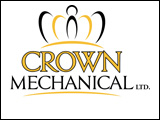The University of Saskatchewan says the rising cost of commercial fertilizer is making the need for maximizing the value of soil nutrients ever more apparent.
As organic nitrogen is converted to the inorganic form by microbes in the soil it becomes available to plants but it also becomes susceptible to loss into the environment.
Researchers with the University of Saskatchewan are measuring organic and inorganic soil nitrogen and using that data to calculate the amount of fertilizer that will be needed by a crop.
Dr. Fran Walley, the head of the University’s Department of Soil Science, says by tracking nitrogen in the soil it will be possible to more accurately calculate fertilizer application rates.
There are environmental concerns and there are economic concerns and using inputs like nitrogen to its maximum efficiency is a critical goal at this point.
We’re seeing fertilizer prices really really increasing and we simply have to be very precise about predicting how much nitrogen a crop is going to require to meet our target yields and that’s not an easy thing to do as it turns out.
So we want to be very efficient about how fertilizer recommendations are being made and, of course, the importance of the environment can’t be ignored.
We’re seeing it in government policies that are being developed and from the perspective of the public good we have to be able to understand what the potential for nitrogen release is so understanding how to manage nitrogen is critical at this point I’d say.
Dr. Walley says scientists are very interested to know the fate of inorganic nitrogen in the soil, how it’s influencing the microbial population and is there a consequent release of nitrogen into the atmosphere.
Source: Farmscape.Ca



